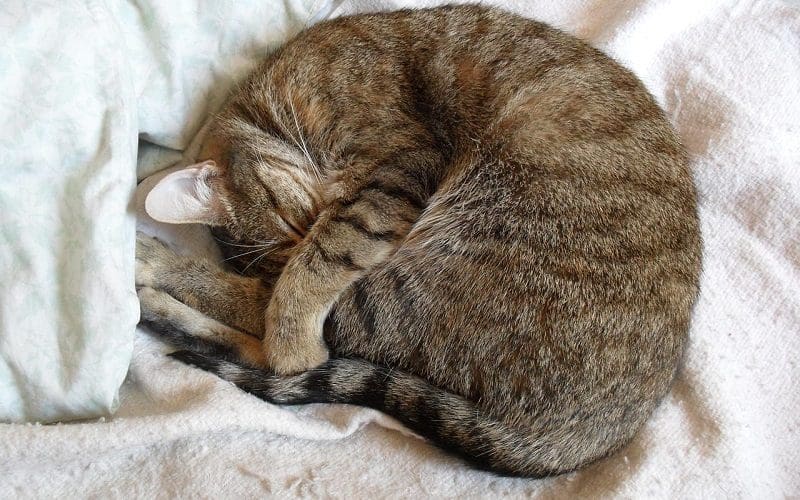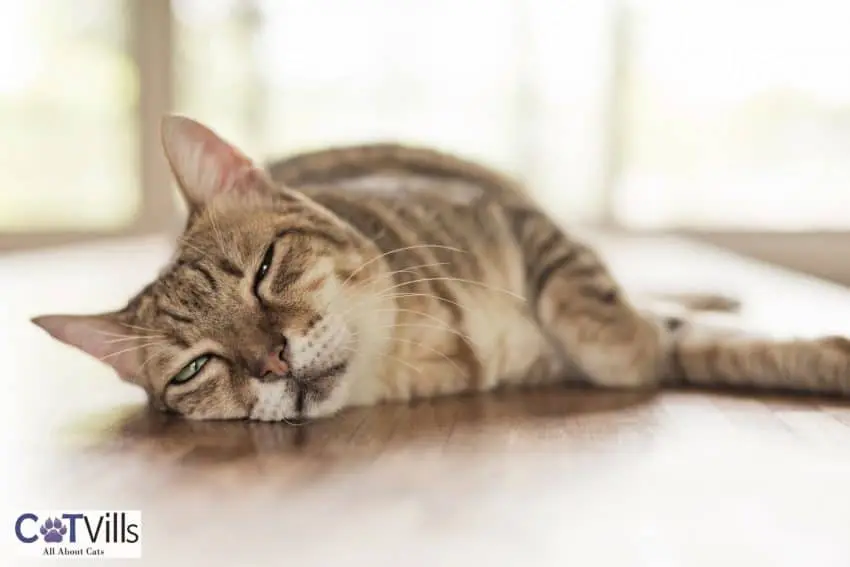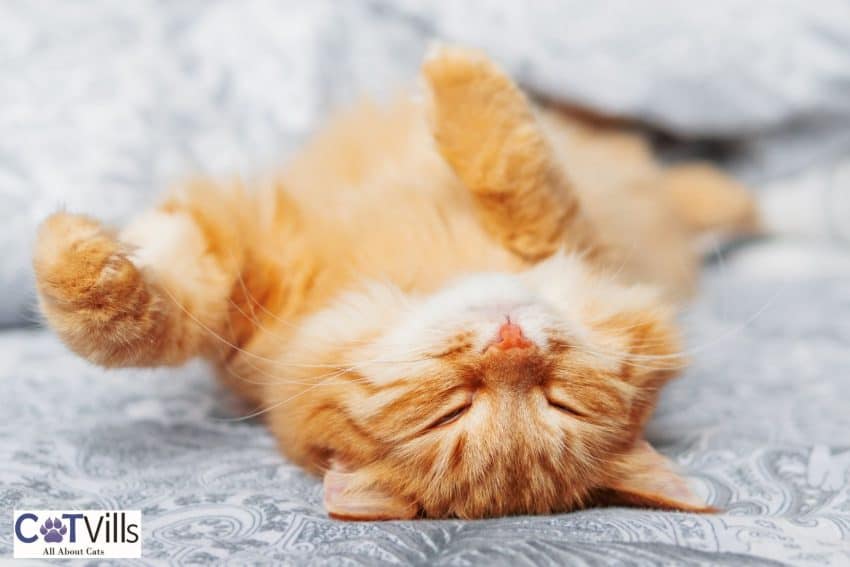Last Updated: 1 year ago
Cats are known for their love of sleep, but how much do cats sleep?
The answer may surprise you! Cats can spend up to 16 hours a day snoozing, which is more than double the amount of time humans typically spend sleeping.
But why do cats sleep so much?
We’ll explain the science behind their sleeping habits and provide tips on how to help your cat get a good night’s sleep. So if you’re wondering how much cats sleep, read on to find out!
The Science of Cat Sleeping Patterns

The science behind cat sleeping patterns is fascinating and can help us better understand our feline friends.
First, it’s important to note that cats are crepuscular animals. This means that they tend to be most active during the twilight hours of dawn and dusk. During these times, cats will hunt for food or explore their environment in search of prey or mates.
As a result, cats naturally become tired after a few hours of activity and require long periods of rest throughout the day.
The average housecat sleeps anywhere from 12-16 hours per day! That’s more than twice as much as humans who typically get 7-9 hours each night.
Cats also have unique sleep cycles compared to other mammals. Instead of having one long stretch at night as we do, cats take several short naps throughout the day with brief awakenings in between them.
Sleep plays an essential role in keeping your cat healthy and happy. Sleep provides them with energy reserves for daily activities such as hunting or playing with toys. It also helps strengthen their immune system which keeps them safe from disease and infection while allowing their bodies time to repair any damage caused by injury or illness.
Additionally, sleep allows cats to dream which helps keep them mentally stimulated and alert when awake – just like humans!
Why Do Cats Sleep So Much?

Do you ever wonder why your cat seems to sleep all day?
It can be hard to understand why cats need so much rest when they seem so energetic and active during their waking hours.
The truth is, cats are designed for long periods of sleep and there are several reasons behind this behavior.
First off, cats have a higher metabolism than humans do which means that they burn through energy more quickly. This means that in order to keep up with their daily activities, cats must take regular naps throughout the day in order to refuel.
Cats also use napping as a way to conserve their energy for when it’s needed most – like hunting or playing.
Cats spend an average of 15-20 hours per day sleeping because it helps them stay alert and ready for any potential danger or prey that may come along.
By taking regular naps, cats can remain vigilant while conserving their energy at the same time!
In addition, sleeping allows cats to process information from the environment around them better than if they were awake. They will be able to respond faster if something unexpected happens.
Cats who get plenty of shuteye also tend to be less irritable when interacting with people or other animals — making them great companions!
Finally, sleeping gives cats some well-deserved relaxation time after spending hours running around chasing toys or exploring new places outside.
Just like humans, your kitty needs her beauty sleep too!
Kittens tend to sleep more than adult cats since they are still growing and developing.
Senior cats may also require more rest due to age-related issues such as arthritis or other medical conditions that can make them feel tired or uncomfortable during the day.
Helping Your Cat Get a Good Night’s Sleep

Do you have a cat that struggles to get a good night’s sleep?
If so, you’re not alone. Many cats struggle with insomnia and other sleep issues.
Fortunately, there are some simple steps you can take to help your feline friend get the rest they need.
Create a Calm Environment
Cats feel most comfortable in an environment that is quiet and free from distractions. Before bedtime, turn off any TVs or radios and keep noise levels low.
You may also want to dim the lights for extra relaxation benefits.
Establish a Regular Sleep Schedule
Just like humans, cats benefit from having regular sleeping habits. Try setting up a consistent bedtime routine for your cat each night before turning off the lights.
This will help them learn when it’s time to go to sleep and stay asleep throughout the night.
Avoid Napping During The Day
It can be tempting to let your cat nap during the day but try not to! Allowing them too much daytime rest can make it harder for them to fall asleep at night as they won’t be tired enough by then.
Instead of naps, encourage active play sessions during daylight hours so they’ll be ready for bed come nighttime.
Talk To Your Veterinarian

If these tips don’t work, talk to your veterinarian about possible medical causes of insomnia such as hyperthyroidism or allergies which could be causing sleep difficulties.
They may suggest treatments such as medication or supplements that could help improve your cat’s sleep quality.
FAQs
Is it normal for cats to sleep all day?
Cats sleep a lot, but it’s considered “catnapping” for 16 to 18 hours a day. If your cat doesn’t respond to you when you walk in the room or when you prepare food, then it may be a sign of sickness.
Do cats sleep much at night?
Cats will nap for an average of 78 minutes at a time and will spend 18 hours a day sleeping. They spend this much time napping both day and night, only getting up when we are getting ready to go to bed, and again when we are about to wake up.
How much do cats sleep by age?
Cats spend between 12 and 20 hours per day asleep. Young adult cats are less active than senior cats and spend more time napping.
Kittens younger than 8 weeks old typically spend 24 hours sleeping, while 8-to-12-week-old cats can usually get away with 20 hours of sleep.

I’ve always known this to be true, that cats are more nocturnal and in the wild, sleep days to conserve energy. My cat sleeps if she’s bored( I’m not home), but otherwise, she naps with me when I nap, sleeps when I sleep at night unless she’s hungry or needs to potty. She is always against me, and I toss a lot, so I disturb her sleep! Lol. She pretty much sleeps when I do. Otherwise, she keeps vigil over me!